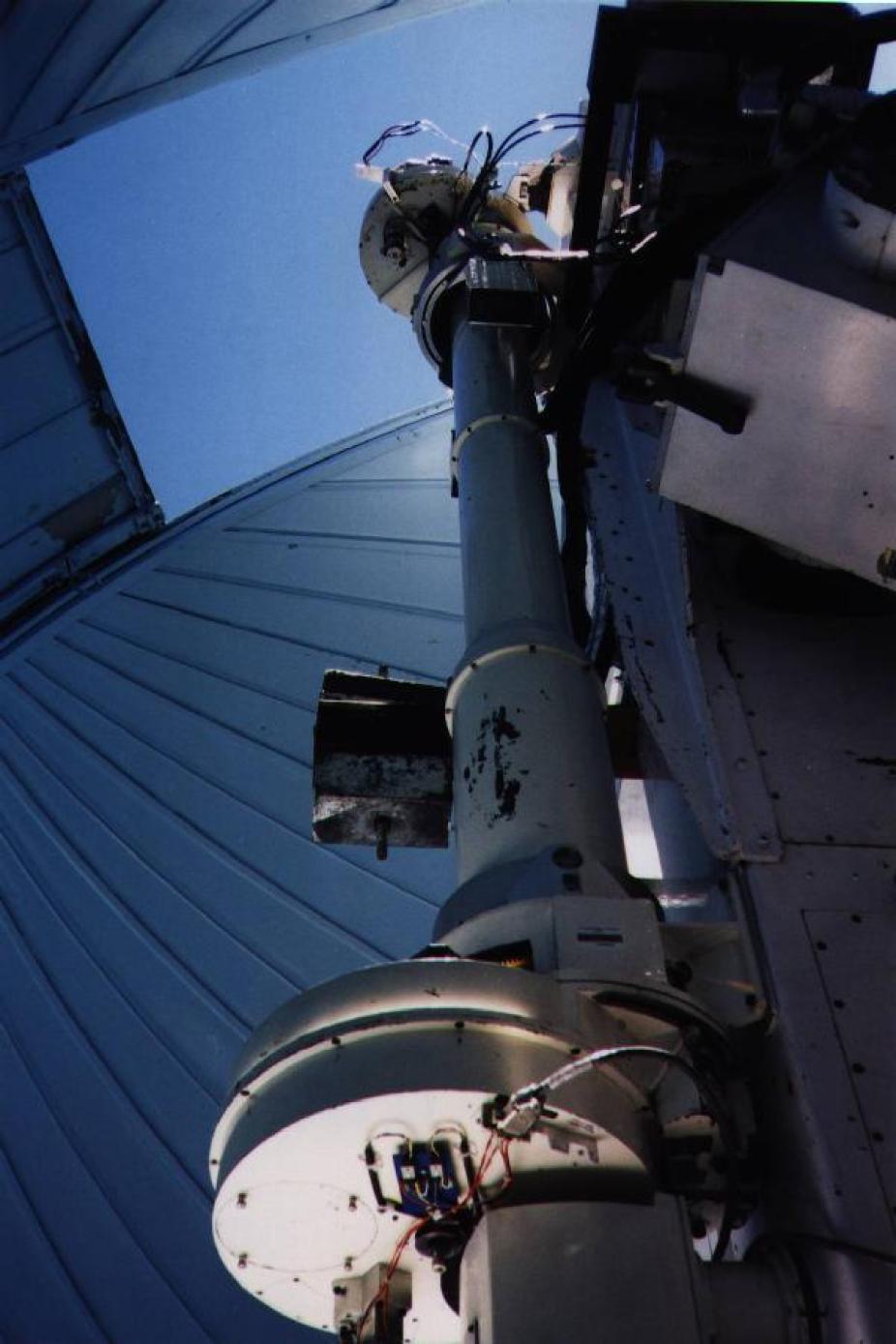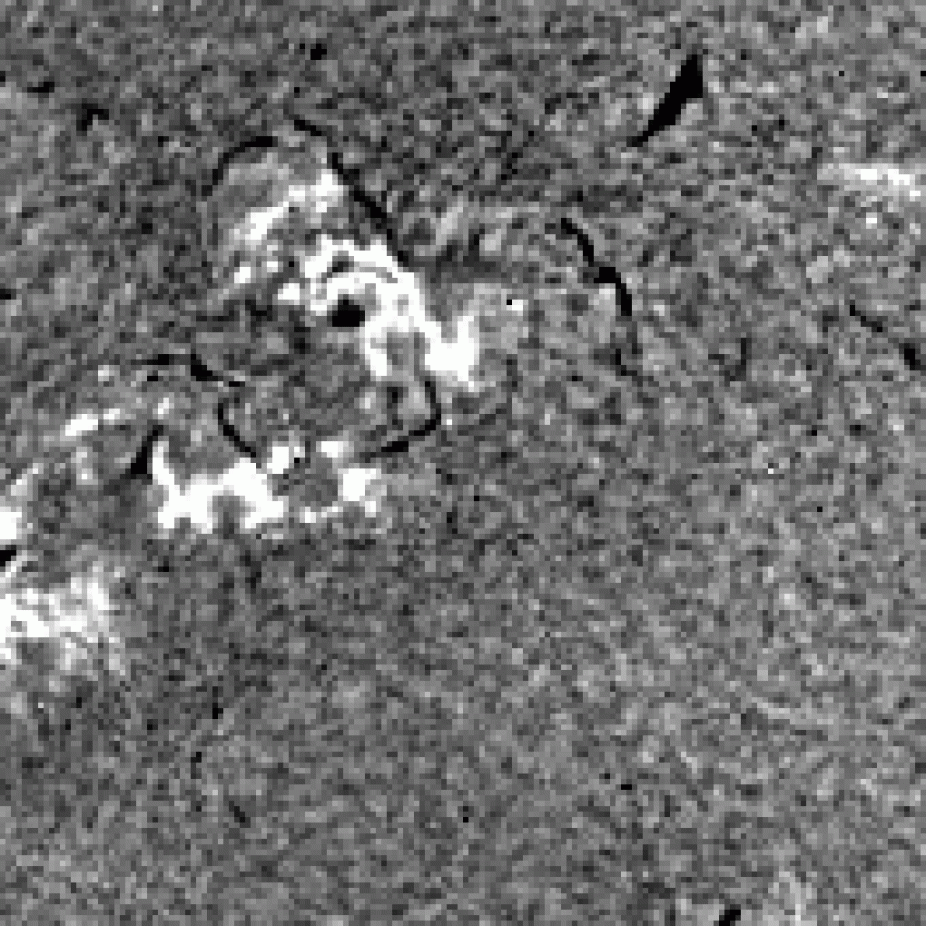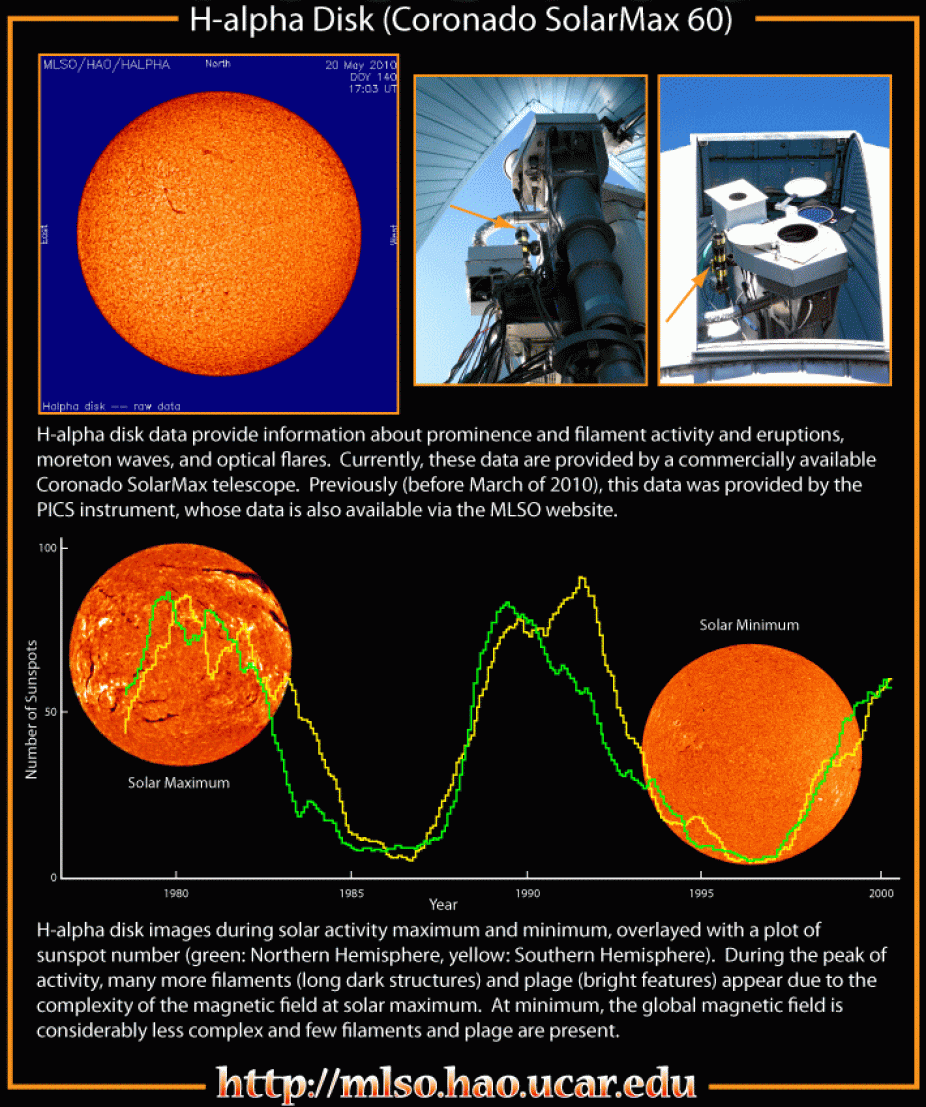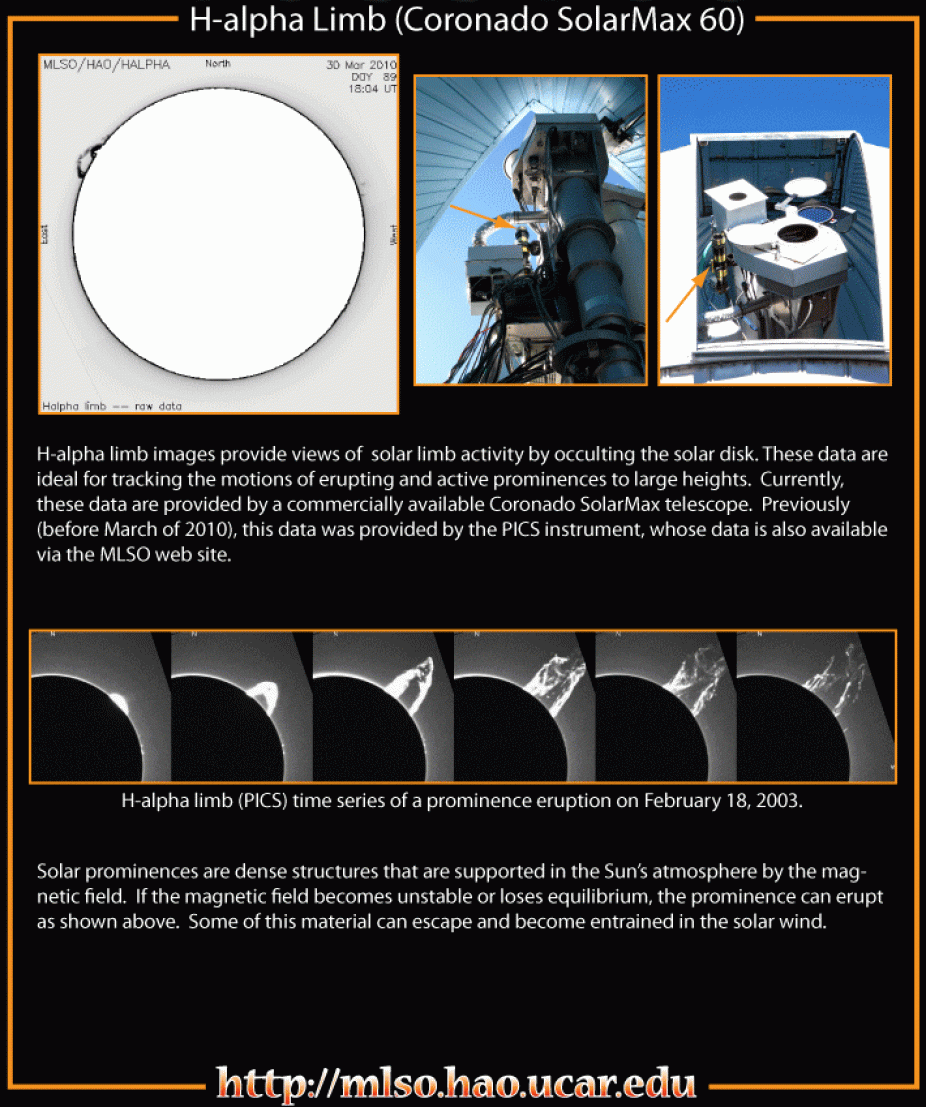PICS & Coronado H-alpha Imagers

PICS on the MLSO spar.
The first H-alpha [656.3 nm] telescope at MLSO was the Prominence Monitor (PMON), which went into operation on 4 February 1980. It acquired both disk and limb images on B/W 35mm film. On 20 February 1994, the Acme 35mm film camera was upgraded to a Kodak Megaplus [Model 1.6] CCD detector (1534x1030 pixels) with a sample size of 3 arcseconds, and the telescope was renamed the Digital Prominence Monitor (DPM).

Photosphere in PICS.
On 25 September 1997, the PICS instrument replaced the Digital Prominence Monitor at MLSO. It provides several improvements over the DPM instrument, including optics for polarization measurement (since removed), improved temperature control, a narrower bandpass filter for disk observations, and improved optics for limb observations. PICS takes images at 656.3 nm, with a FOV of 2.3 solar radii, a spatial resolution of 2.9"/pixel, and a nominal cadence of 3 minutes.
PICS was decommissioned on 23 Feb, 2010 to make room on the tracking spar for the Coronal Multi-channel Polarimeter (CoMP). In its place, a small Coronado SolarMax60 Halpha imager was installed. The Coronado has a full FOV out to 2.25 Rsun at low latitudes and 1.6 Rsun over the poles before cropping (for large EPLs, the full FOV can be provided). Its spacial resolution is 1.77 arcseconds per pixel, with a nominal cadence of 3 minutes (capable of obtaining an image per second).

Coronado and solar cycle summary slide.

PICS summary slide.